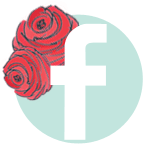World War II and Etiquette?

Today, we remember the wonderful people, both men and women, who gave their lives for freedom. It is indeed a solemn day and begets our wholehearted thought, prayer and love.
But, we are left with a lot of good things from World War II.
World War II didn’t just reshape global politics and drive social change; it also left a lasting imprint on the everyday habits we now take for granted. As the war effort led to new challenges in the U.S., such as resource scarcity and shifting societal rules, the need for innovation and efficiency ushered in not only new military strategies, but new ways of life on the home front.
These small but significant changes may have been born out of necessity, but they shaped American etiquette and culture permanently. From grooming to fashion to nutrition, here are some now-common habits that came out of World War II.
Wearing T-Shirts
T-shirts are among the indispensable components of modern style, but they were once considered mere undergarments. The classic white garment first became a standard part of the U.S. Army’s uniform during World War I. The undershirt was given a new name — the T-shirt — in the 1920s thanks to writer F. Scott Fitzgerald, and in World War II, it was once again made part of the standard-issue military uniform.
By that time, T-shirts were already becoming more than just underwear; they were marketed to civilians and worn by younger crowds in high schools and universities. But it wasn’t until after the war ended that they became ubiquitous.
Soldiers returning home from combat had grown accustomed to the T-shirt’s comfort and began incorporating the item into their everyday wear. Images of soldiers wearing T-shirts while serving their country also boosted the garment’s popularity, and in the 1950s, movie stars such as Marlon Brando and James Dean made the T-shirt an undeniable staple of casual fashion.
Toothbrushing
Oral hygiene existed in various forms for centuries before World War II, but most Americans started brushing their teeth daily only after soldiers brought the habit home with them after the war. During World War I, poor dental care contributed to health problems on the battlefield: soldiers suffered from “trench mouth,” a painful infection that caused sore and bleeding gums, and, in more serious cases, fever and fatigue.
As a result, the military emphasized stricter hygiene routines in World War II, including mandatory toothbrushing at least once a day for soldiers. Troops were supplied with hygiene kits containing a toothbrush and toothpaste (or tooth powder, which turned into a rather abrasive paste when mixed with water). By the time the war was over, the habit was ingrained with returning soldiers, and in 1950, when softer nylon toothbrush bristles were introduced, toothbrushing became a daily routine in many American households.
A Clean Shave
In the years following World War II, American lives were shaped by a sense of relief and optimism. The country’s postwar economy surged back to life, and consumerism was not only expected, but encouraged. These changes coincided with new habits among returning U.S. soldiers. Along with having clean teeth, they were also accustomed to being clean shaven — and having easy access to the products needed to stay that way. Razor company Gillette had been providing shaving kits to soldiers since World War I, and in World War II, it also made covert shaving kits for prisoners of war, which contained miniature tools such as compasses, maps, and money. Following the war, the company was eager to capitalize on this brand awareness while meeting new consumer demand as soldiers transitioned back into civilian life.
The clean-shaven look remained popular until the beatnik style emerged in the 1960s. Women had also been encouraged to shave their legs since the 1930s, and due to the World War II nylon shortage, smooth legs — with painted-on hosiery — became the norm by the 1950s.
Blue Jeans
Blue jeans were already starting to seep into U.S. culture by the time soldiers reported for duty during the Second World War. Denim dungarees and coats had been worn by the U.S. Navy since the early 1900s, and by the 1930s, jeans were the de facto pants of Western movie stars — a symbol of the romanticized American cowboy.
During World War II, however, blue jeans went global. U.S. soldiers stationed overseas were often from working-class Western families, and they wore their denim — some of which was made specifically for soldiers — with pride.
By the early 1950s, the style was undeniable: the newly minted “teenager” demographic had adopted blue jeans as counterculture cool. Other developments on the homefront also helped pave the way for the American denim boom. The rise of women in the workforce during the war, symbolized by Rosie the Riveter, positioned the workwear as practical, durable clothing that was both essential for industrial roles, and a staple of postwar women’s fashion.
Red Lipstick
Throughout World War II, American women were encouraged to maintain a polished appearance, and lipstick in particular became a powerful symbol of patriotism. As slogans such as “keep your beauty on duty” reminded women that their appearance could boost morale at home and abroad, red lipstick emerged as a defiant beauty staple.
When women in the Allied countries learned that Adolf Hitler had a dislike for the look, they embraced it.
British women even went so far as to stain their lips with beet juice if they couldn’t find or afford the real thing. Red lipstick became a powerful symbol: the U.S. Army commissioned its own shade, “Victory Red,” for women in uniform, and in 1942, cosmetic powerhouse Elizabeth Arden’s “Montezuma Red” became standard issue. It was available as a lipstick, nail polish, and blush that perfectly matched the red piping and chevrons on the women’s Marine uniforms.
Oh my goodness, your Two Chums are on it! Red lipstick is definitely one of their favorite lipsticks and “keep your beauty on duty” is going to be their new slogan!








Comments are closed.